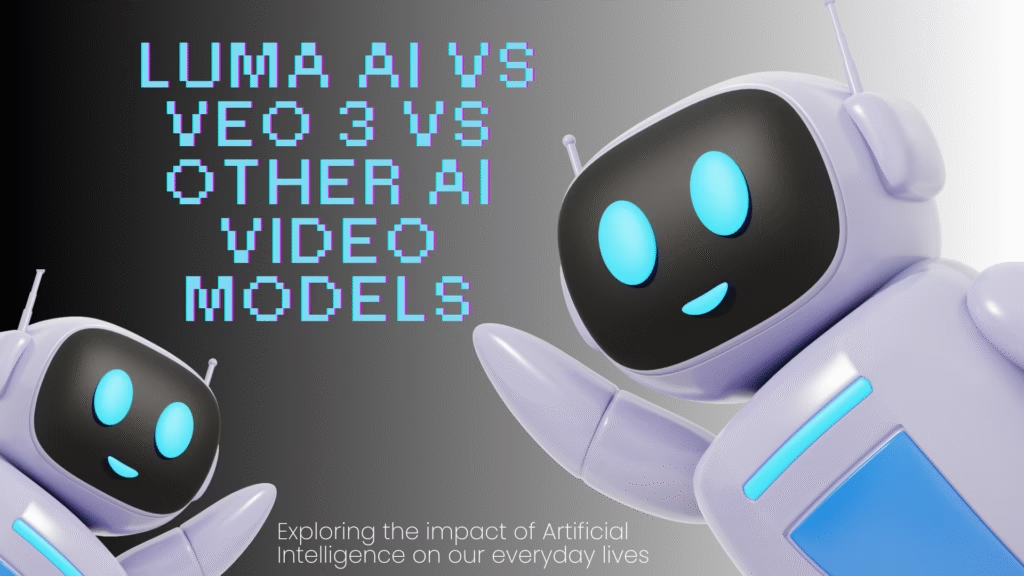
Artificial Intelligence is rapidly changing the way we create and consume content. Among the most discussed innovations in 2025 are Luma AI and Veo 3 AI, two powerful AI video models that are redefining video production and creativity. While both tools aim to make video generation more accessible and efficient, they are built with different technologies, use cases, and strengths. Let’s explore the key differences between Luma AI and Veo 3 AI in detail.
1. Core Technology
- Luma AI uses advanced Neural Rendering and 3D capture technology. It focuses on creating ultra-realistic videos, objects, and scenes by simulating real-world physics, lighting, and motion. Its standout feature is the ability to generate lifelike 3D visuals that closely mimic cinematic quality.
- Veo 3 AI (developed by Google DeepMind) is a text-to-video generative model. It is designed to create videos directly from text prompts and short descriptions, with strong control over motion, style, and storytelling. It focuses on speed, creativity, and accessibility for all creators.
2. Video Quality & Output
- Luma AI is known for producing high-resolution, photorealistic visuals with accurate reflections, textures, and depth. Its outputs often resemble professional cinematography, making it suitable for advertisements, films, and realistic 3D animations.
- Veo 3 AI balances quality with speed. It can generate videos at 1080p resolution and also offers Veo 3 Fast, which produces quicker drafts at 480p for testing or prototyping. While not as photorealistic as Luma AI, Veo 3 excels at stylization, motion control, and creative storytelling.
3. Use Cases
- Luma AI is popular in industries like film production, advertising, product design, gaming, and 3D visualization. It is best suited when creators need lifelike environments, cinematic effects, or accurate 3D models.
- Veo 3 AI is tailored for YouTube creators, marketers, and social media influencers. With features like direct Shorts generation, background changes, and speech-to-song integration, it empowers creators to generate engaging content without heavy editing.
4. Ease of Use
- Luma AI requires slightly more technical expertise. Creators often need to provide structured inputs such as 3D scans, camera angles, or detailed prompts to achieve the best results.
- Veo 3 AI is designed for simplicity. Users can type a text prompt or upload raw footage, and the AI automatically generates a video. It is ideal for beginners and creators who prioritize speed over technical complexity.
5. Strengths & Limitations
- Luma AI Strengths → Cinematic quality, photorealistic 3D rendering, industry-grade visuals.
- Luma AI Limitations → Slower rendering, more technical requirements, higher computing cost.
- Veo 3 AI Strengths → Fast, user-friendly, perfect for content creators and marketers.
- Veo 3 AI Limitations → Less realistic than Luma AI, lower resolution in “Fast” mode, may struggle with detailed physics.
Conclusion
Both Luma AI and Veo 3 AI represent the future of AI-driven video creation, but they serve different audiences. Luma AI is the go-to tool for professionals seeking ultra-realistic and cinematic content, while Veo 3 AI is perfect for creators who value speed, creativity, and accessibility. In short, Luma AI equals realism and precision, while Veo 3 AI equals creativity and speed. The choice depends on whether you are building a cinematic masterpiece or producing quick, engaging content for digital platforms.
